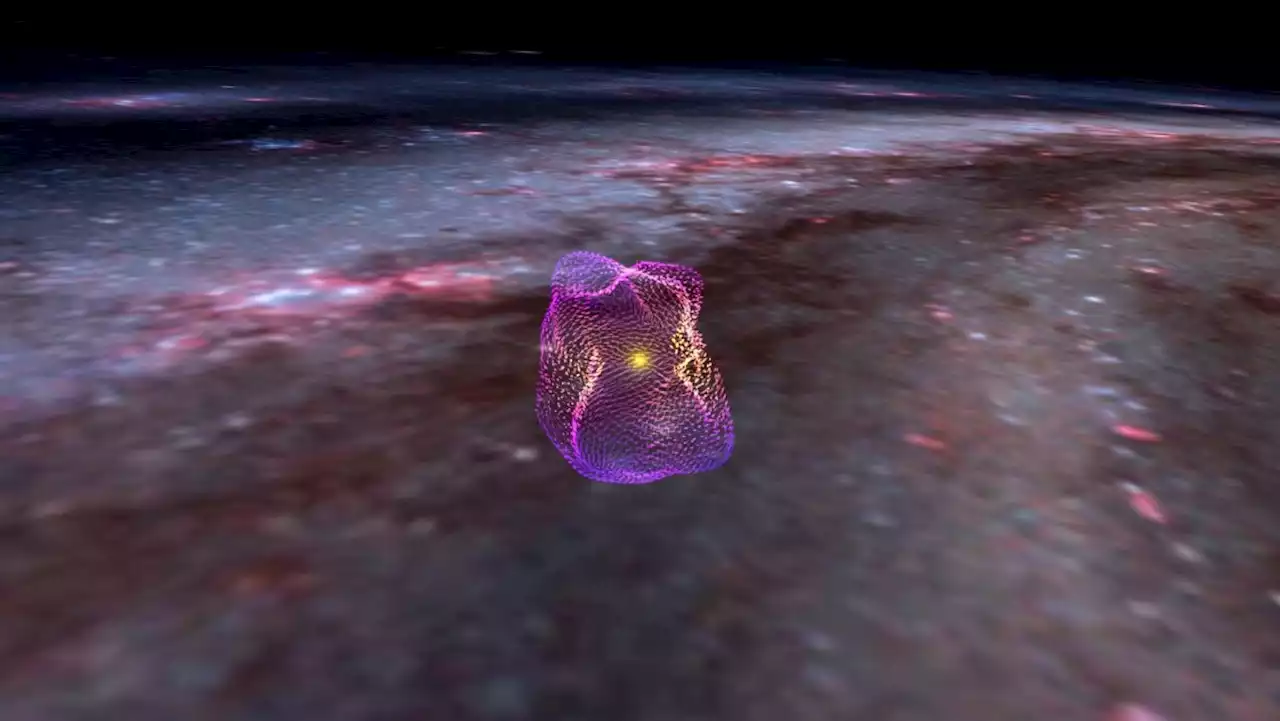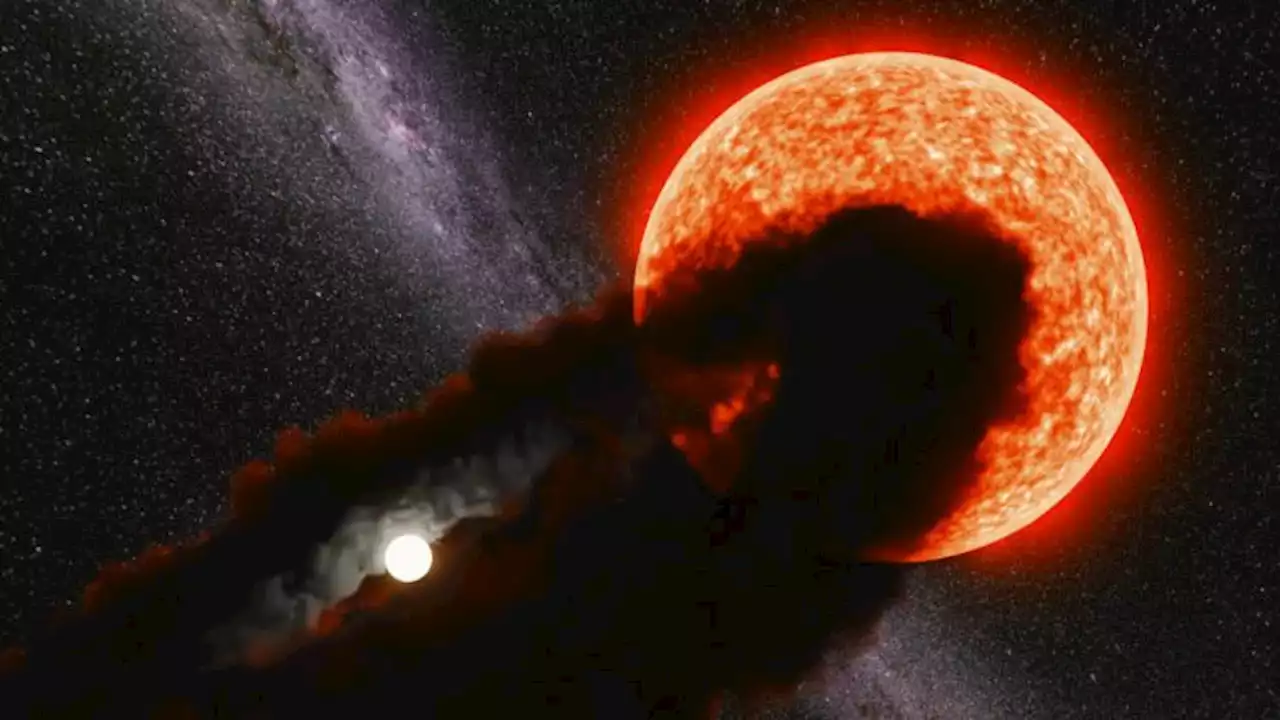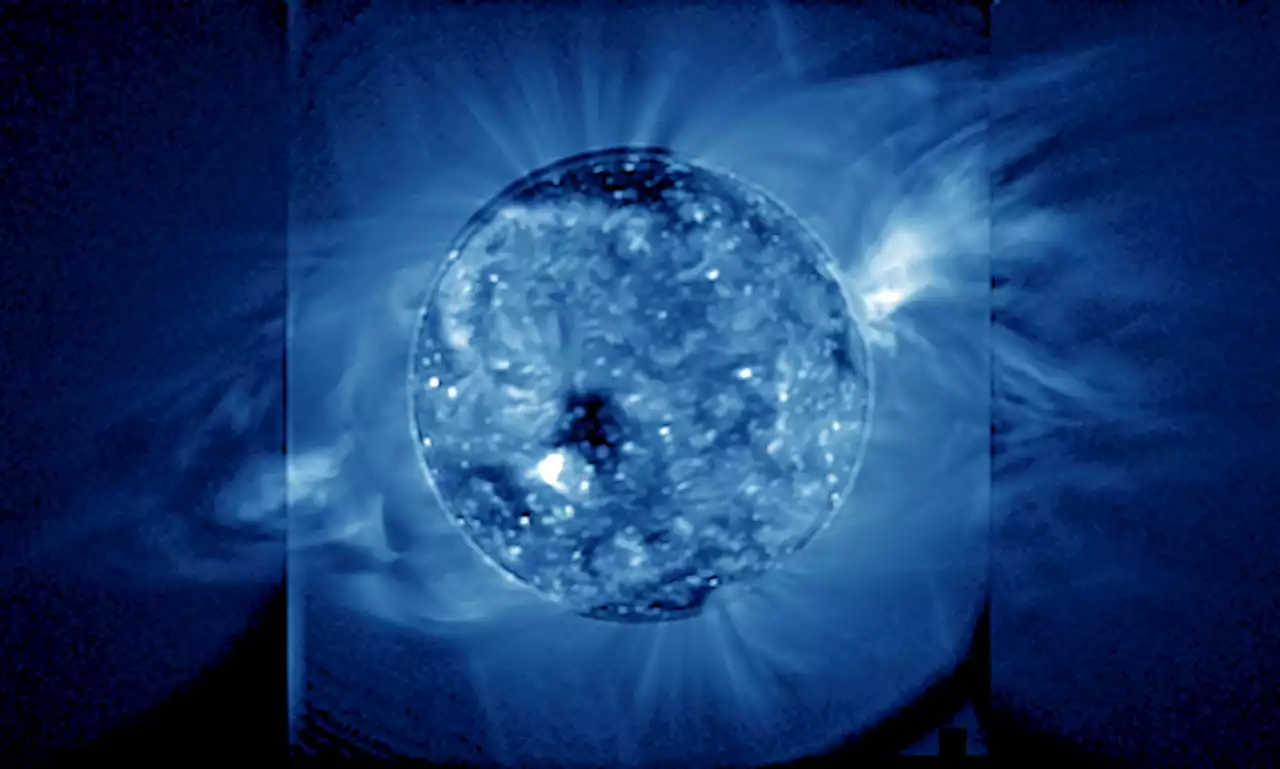The researchers observed long, web-like structures that eject particles from the Sun into space. A group of researchers from Southwest Research Institute, NASA, and the Max Planck Institute for Solar System Research has found web-like plasma structures in the Sun's middle corona by using an innovat
structures in the Sun’s middle corona by using an innovative observation method of imaging the middle corona in ultraviolet wavelength. Their findings were recently published in the journal. The discovery could help improve our understanding of the origin and interactions of the solar wind with the rest of the solar system.
New study reveals long, web-like structures in Sun’s middle corona. Credit: Southwest Research Institute To find new ways to observe the Sun’s corona, Seaton suggested pointing a different instrument, the Solar Ultraviolet Imager on’s Geostationary Operational Environmental Satellites , at either side of the Sun instead of directly at it and making UV observations for a month. What Seaton and his colleagues saw were elongated, web-like plasma structures in the Sun’s middle corona. Interactions within these structures release stored magnetic energy propelling particles into space.
Seaton believes these observations could lead to more comprehensive insights and even more exciting discoveries from missions like PUNCH , a SwRI-led NASA mission that will image how the Sun’s outer corona becomes the solar wind.
United States Latest News, United States Headlines
Similar News:You can also read news stories similar to this one that we have collected from other news sources.
 A Recently Discovered Gas Cloud Near Andromeda Stumps AstronomersClues to the origin of this enormous cloud of gas have been maddeningly vague
A Recently Discovered Gas Cloud Near Andromeda Stumps AstronomersClues to the origin of this enormous cloud of gas have been maddeningly vague
Read more »
 A galactic merger brought a pair of supermassive black holes together | CNNAstronomers have spied two supermassive black holes feasting together as two galaxies merged — and are the closest to colliding that astronomers have ever observed.
A galactic merger brought a pair of supermassive black holes together | CNNAstronomers have spied two supermassive black holes feasting together as two galaxies merged — and are the closest to colliding that astronomers have ever observed.
Read more »
Astronomers spot the most distant stars in the Milky Way — a million light-years awayThe farthest one is nearly halfway to the Andromeda Galaxy.
Read more »
 Astronomers make 1st-ever 3D map of Local Bubble's magnetic fieldsThe supernova-blown bubble in interstellar space is like a snow plow sweeping up gas and dust at its boundaries.
Astronomers make 1st-ever 3D map of Local Bubble's magnetic fieldsThe supernova-blown bubble in interstellar space is like a snow plow sweeping up gas and dust at its boundaries.
Read more »
 A star mysteriously blinked for 7 years, and astronomers think they finally know whyThe strange dimming of Gaia17bpp could point to a small companion surrounded by a huge dusty disk.
A star mysteriously blinked for 7 years, and astronomers think they finally know whyThe strange dimming of Gaia17bpp could point to a small companion surrounded by a huge dusty disk.
Read more »
Lifting the veil: Astronomers conjure up the hazes that obscure alien worldsAlien planets are shrouded in hazes that hide clues to their makeup. Lab experiments could help clear the view. LongReads
Read more »
